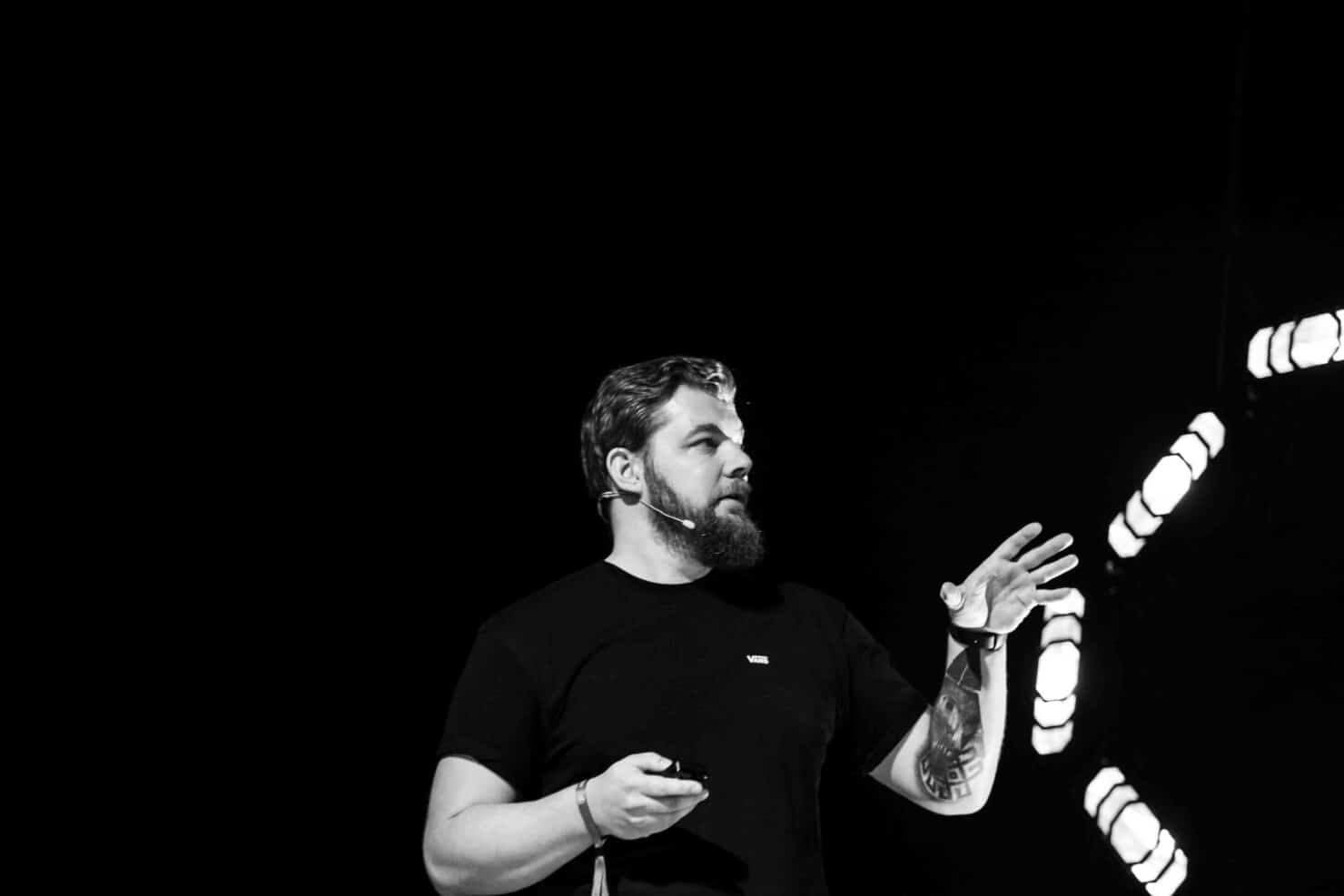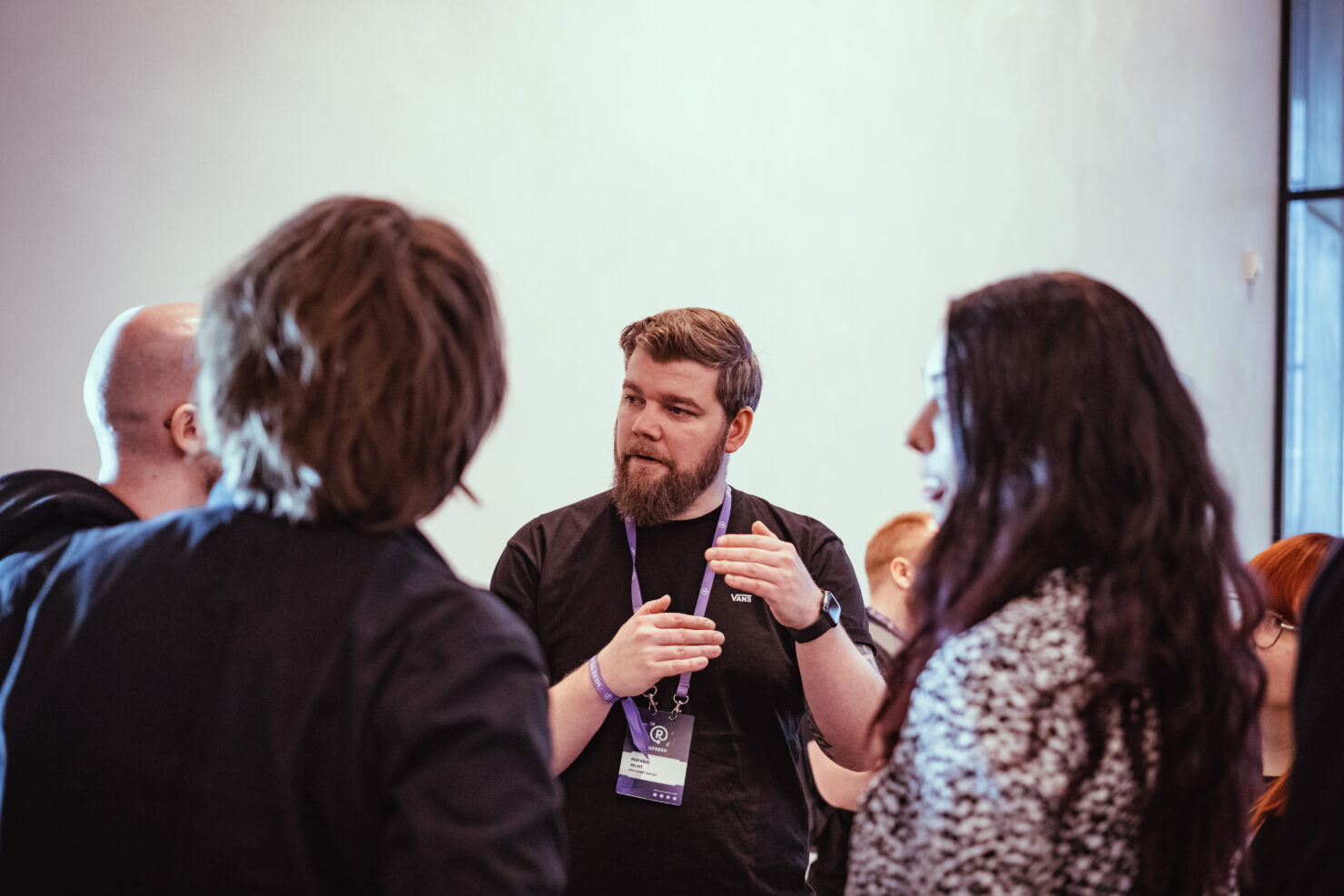February 3rd, 2023 | Blog
Developers are Designers and Designers are Developers

Velvet’s Development Team Lead, Peep Käiss took the stage at the Refresh conference and shared his vision on how designers and developers should work more in unison and why it is so important.
This is what he talked about.
All projects start off from a similar general starting point: staying on budget, meeting the scope and quality requirements – preferably exceeding them – whilst keeping the team in good spirits. Yet, despite how many different methodologies and project management tools are tried and tested, similar issues keep coming up. The thing is, paradoxically the most unpredictable part in the equation does not change – people.
Most issues boil down to weak communication and the team not being on the same page. Sounds simple, but the issues and thus, possible solutions are constantly underrated. What can we do?
Your regular casual project goes down like this:
There is a lot going on in the beginning of the project when the big picture is canvassed: understanding the task, setting the scope, figuring out the context and design direction. Mostly the project manager and UX/UI designers are more involved and set the scene.
In the designing phase, there can be occasional comms between the project manager and developers as input. Then comes handover from the designers, some sit-downs to discuss, but nonetheless from the lack of context confusion arises:
- Why is the same button positioned differently on similar views?
- Why is the same component acting differently?
- Why is the user flow designed this way? It doesn’t make sense?
- Who came up with this architecture and navigation?
- Why are the colours of elements on this page different from the rest?
Hello? Who came up with this?
Asking these questions is perfectly normal and encouraged. You want the result to make sense, after all. But it brings about back and forth discussions with the designer (and other involved parties) that takes time.
At this point you might not get answers to your questions. You don’t get the ticket description or view in Figma 100% right, so you assume, potentially leading to considerable rework before live or even 6 months onwards, scalabiltiy issues, etc. The result might not be bad per se, but not what was expected, leaving the design & client team feeling incomplete.
The good news is, by reallocating tasks on the process line, it can be avoided.

Involve the developers early
Make room for collaboration earlier in the process. This way, the developers understand the actual idea or client’s actual needs, get why some user flows might be out of the ordinary. Additionally, they can offer different angles and solutions to the UX/UI nuances, have ideas how to solve the architecture and scalability concerns. The synergy, feeling and context is shared and more clear.
Alright, then. Let’s invite developers to planning sessions and we’re done. Problem solved? Not that easy, sorry…
The key is actual presence and active participation in the planning phase.
In the design phase, we encourage developers to:
- Be the designer’s right hand man
- Be open to questions
- Be a constructive team player
- Not say “it can’t be done” – offer alternatives
- Always ask “does it makes sense?”
Good collaboration and sign-offs in the design phase result in an actual working prototype. Potential impediments coming up in dev are already solved and the design phase produces actual, executable results, not “views” showing an ideal situation or state. Everybody’s contribution in all the phases means shared responsibility, which also means better outcome.
We have a hunch of what you’re thinking
We get it. Easier said than done. Everybody has stuff to do and why double the work hours and share every single thought process that bears a resemblance with an idea. It takes just too much time and there’s no way we can get those developers to talk and designers to trust them. They’re not even on the same page.
Well, our experience says otherwise. It is doable if you really want to come out of the endless spinning wheel of delayed deadlines and constant refactoring.
How to achieve fruitful collaboration between UX/UI designers & developers?
Set the scene
- Invest time into activating your developers. They need to get comfortable with the idea of offering ideas and solutions already at early stages.
- Encourage and praise the developers who are willing to think along during these planning sessions. You might find it surprising how much developers actually want to contribute.
- Make sure that developers are available during the design phase and enable them to support the designer if needed.
Build empathy and educate
- Encourage designers to think about already the next phase when they work, and support them to feel comfortable about asking development related questions during design phase.
- Ensure that the same communication level is maintained during development phase. No bouncing, but quick check-ins. Eliminate assumptions.
- Do in-house “how developers work?” and “how designers work?” workshops or demos. Bring different disciplines closer together.
- Create a guide or dictionary that includes all the basics about how things are talked about or how things work in your company.
Is it reinventing the wheel? No. But we have tried to solve the same issues in software development for 50 years. New project management methodologies have improved the process and outcome, but not solved the issues.
Focusing on collaboration and bringing designers and developers closer together will help to solve the underlying problems we are is facing. Try it and let us know how it goes!